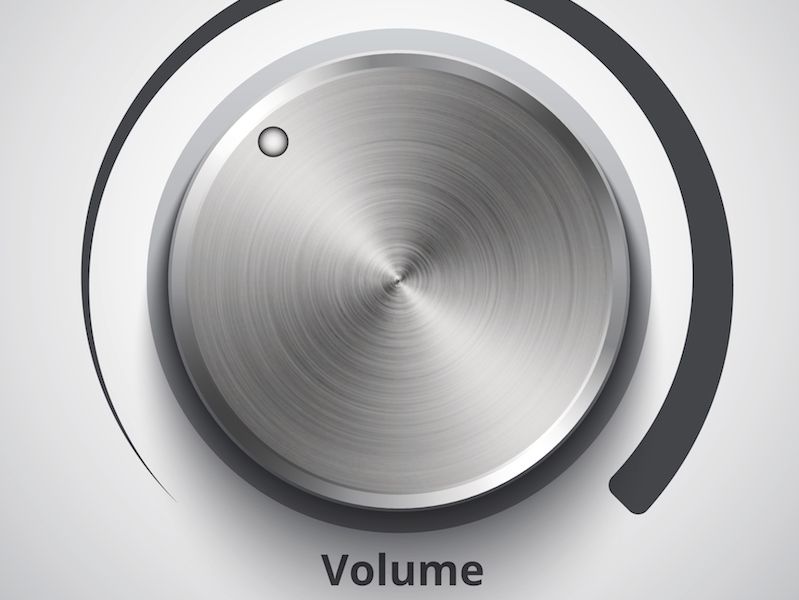
Have you ever seen the “Beware of Sharks” sign when you’re at the ocean? It’s easy to understand that you should never dismiss a warning like that. A sign like that (especially if written in large, red letters) may even make you reconsider your swim altogether. But people don’t tend to pay attention to warnings about their hearing in the same way for some reason.
Current research has found that millions of people neglect warning signs regarding their hearing (these studies specifically considered populations in the United Kingdom, but there’s no doubt the concern is more global than that). Awareness is a big part of the issue. It’s fairly instinctive to be scared of sharks. But fear of loud noise? And the real question is, what’s too loud?
We’re Surrounded by Hazardously Loud Sounds
It isn’t only the rock concerts or the machine shop floors that are dangerous to your hearing (not to minimize the hearing risks of these situations). Many every-day sounds are potentially dangerous. That’s because exposure time is as dangerous as the volume. Your hearing can be injured with even low level sounds like dense city traffic if you’re exposed to it for more than two hours at a time.
Generally, here’s a rough outline of when loud becomes too loud:
- 30 dB: Everyday conversation would be at this sound level. At this level, there won’t be any limit to how long you can confidently be exposed.
- 80 – 85 dB: This is the sound level of heavy traffic, lawn equipment, or an air conditioning unit. After about two hours this level of sound becomes dangerous.
- 90 – 95 dB: A motorcycle is a good example of this sound level. This level of exposure becomes harmful in as little as 50 minutes of exposure.
- 100 dB: This is the amount of noise you may experience from a mid-size sporting event or an approaching subway train (of course, this depends on the city). This volume can become hazardous after 15 minutes of exposure.
- 110 dB: Do you ever turn the volume on your earpods up to max? That’s normally around this sound level on most smartphones. This amount of exposure becomes dangerous after only 5 minutes of exposure.
- 120 dB and over: Instant pain and injury can occur at or above this level (think about an arena sized sports event or rock show).
What Does 85 Decibels Sound Like?
Generally, you’re in the danger zone when you’re dealing with any sound 85 dB or above. The issue is that it isn’t always obvious just how loud 85 dB is. A shark is a tangible thing but sound is not so tangible.
And that’s one of the reasons why hearing warnings often go neglected, when the sound environment isn’t loud enough to cause pain, this is particularly true. Here are a couple of potential solutions:
- Get an app: There isn’t an app that will directly safeguard your ears. But there are several free apps that can work as sound level monitors. It’s hard to judge what 85 dB feels like so your hearing can be injured without you even realizing it. The answer, then, is to have this app open and track the noise levels near you. This can help you establish a sense for when you’re entering the “danger zone” (and you will also discern immediately when things are getting too noisy).
- Adequate signage and training: This especially relates to the workplace. The significant dangers of hearing loss can be reinforced by signage and training (and the advantages of protecting your hearing). Also, just how loud your workspace is, can be made clear by signage. Training can tell employees when hearing protection is needed or recommended.
If You’re in Doubt, Protect Yourself
No signage or app will ever be flawless. So take the time to safeguard your ears if you have any doubt. Noise damage, over a long enough time period, can result in hearing loss. And these days, it’s never been easier to injure your ears (it’s a straight forward matter of listening to your tunes too loudly).
If you’re listening to headphones all day, you should not turn up the volume past the half way. You require noise blocking headphones if you are constantly turning up the volume to cover up background noise.
That’s the reason why it’s more essential than ever to identify when the volume becomes too loud. And to do that, you need to increase your own awareness and knowledge level. Protecting your ears, wearing ear protection, or reducing your exposure, is pretty simple. But you have to know when to do it.
Today that should also be easier. That’s even more true now that you have some insight.
Schedule a hearing exam right away if you think you might be suffering from hearing loss.